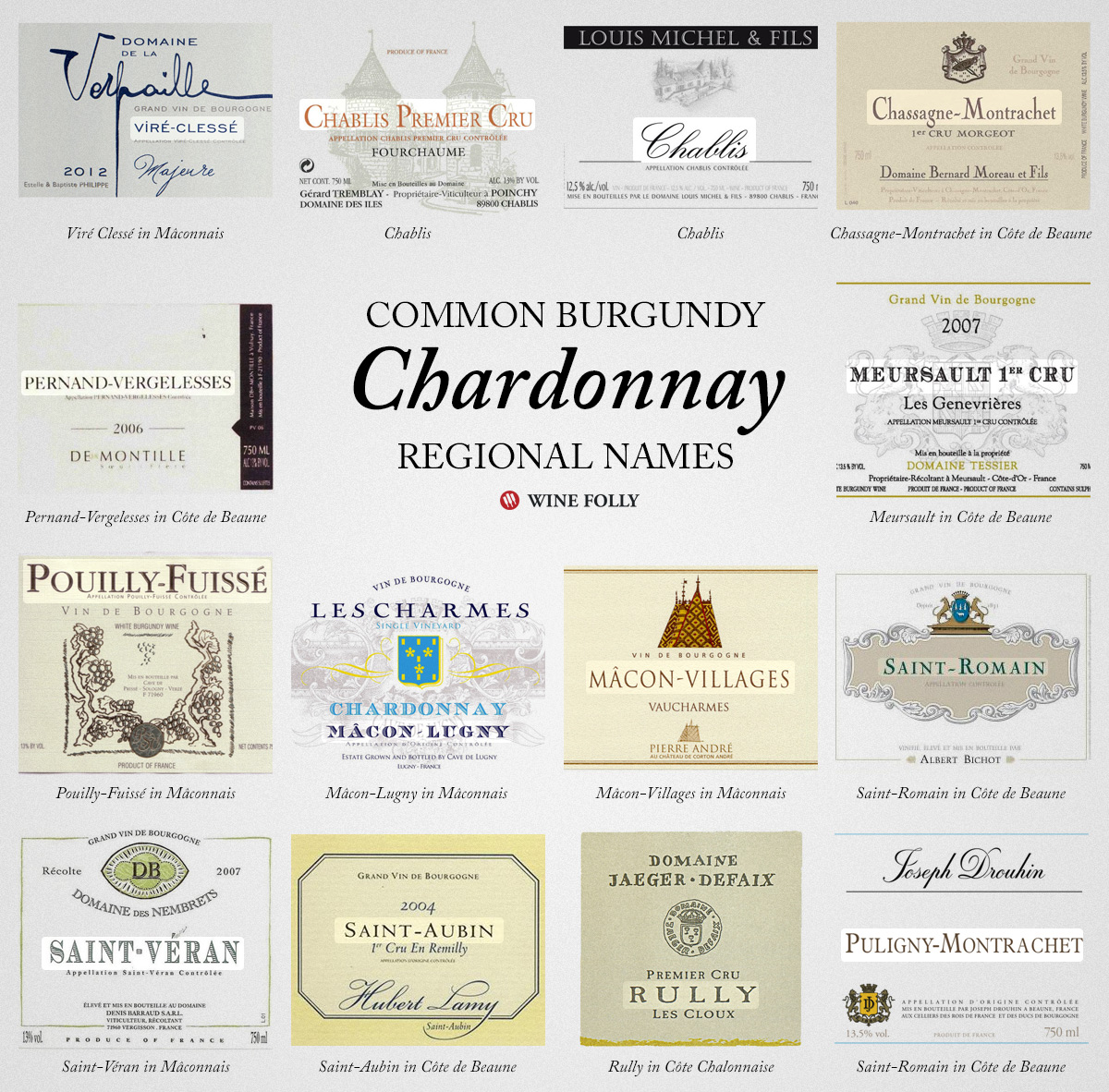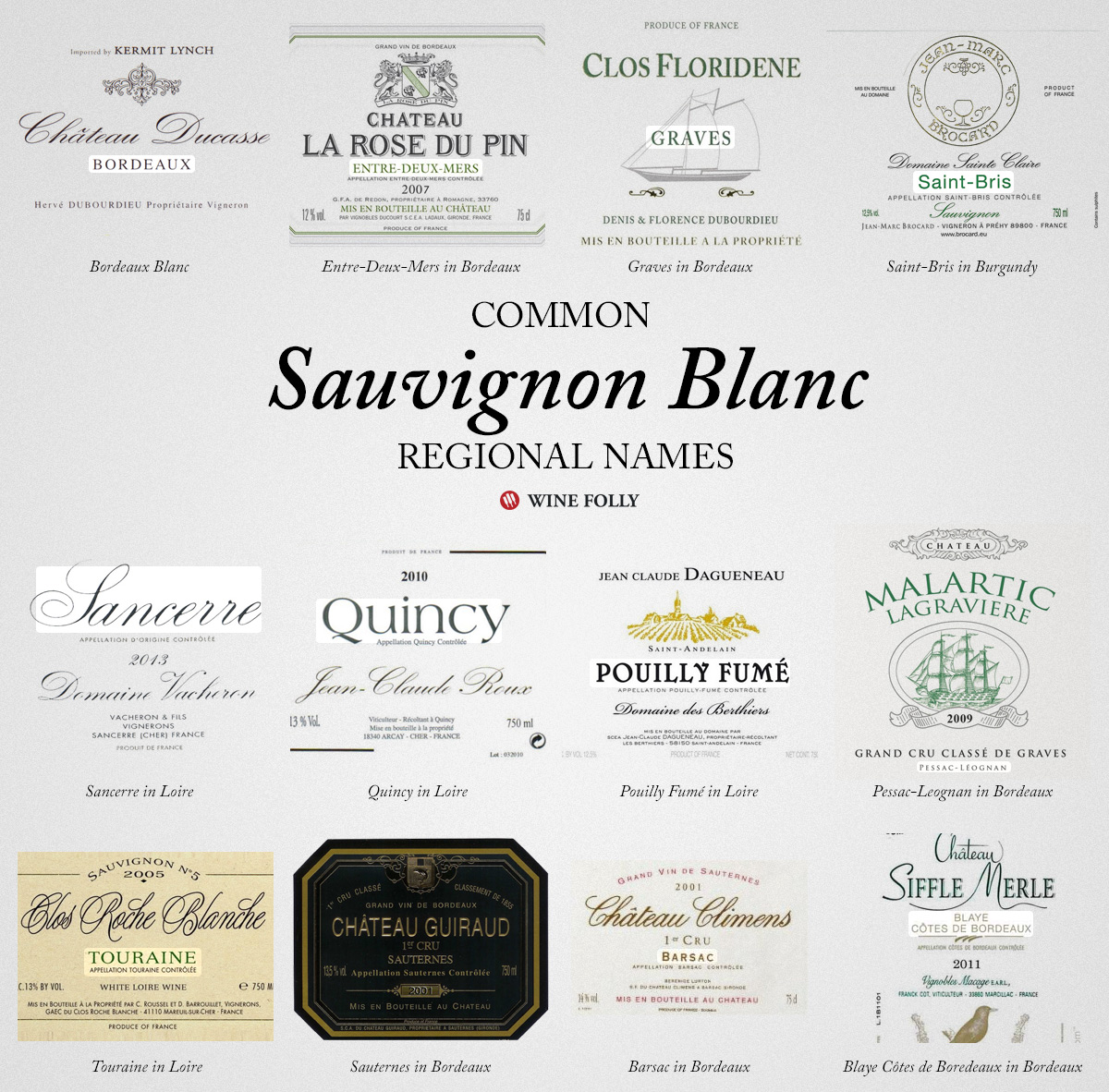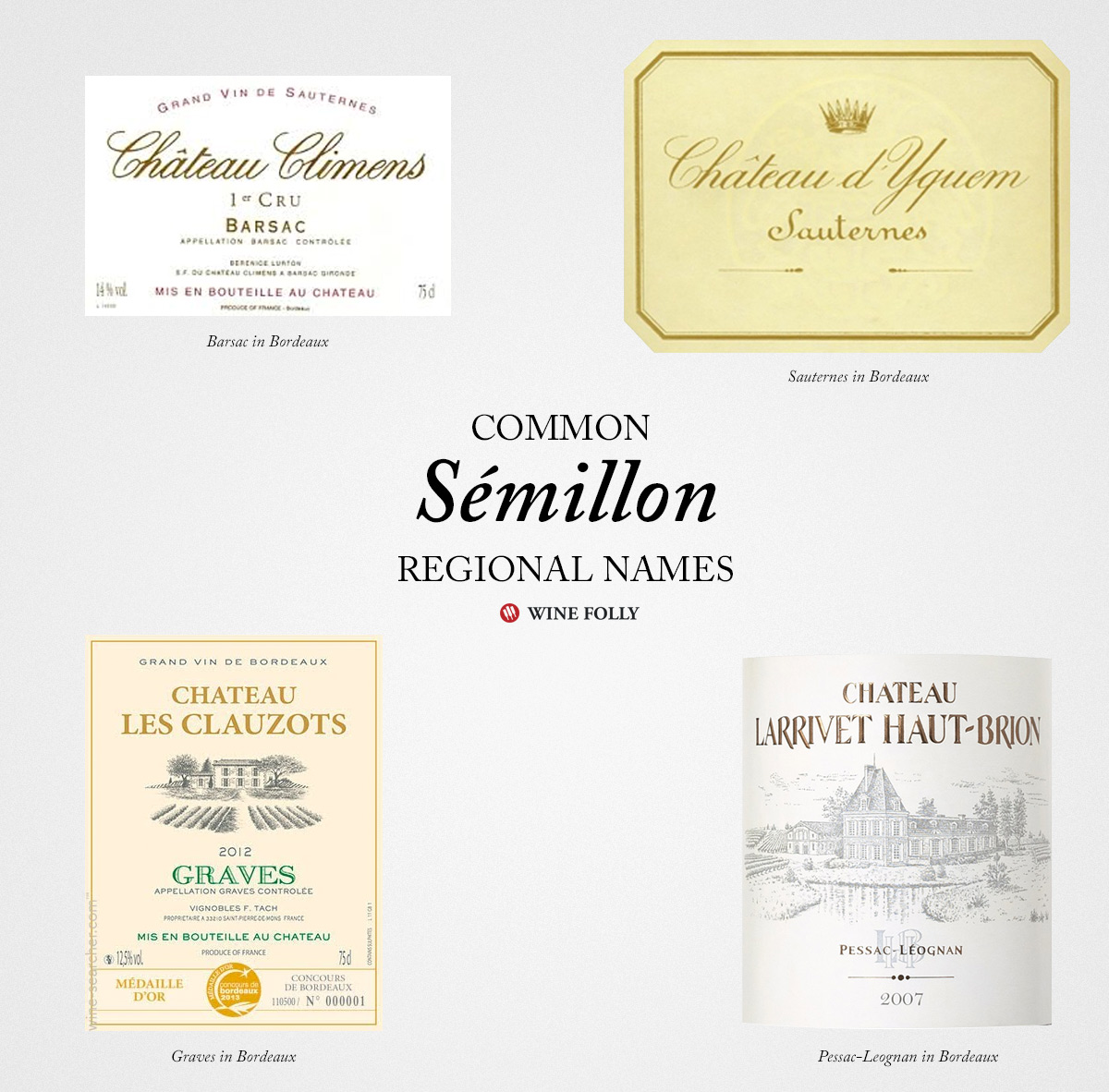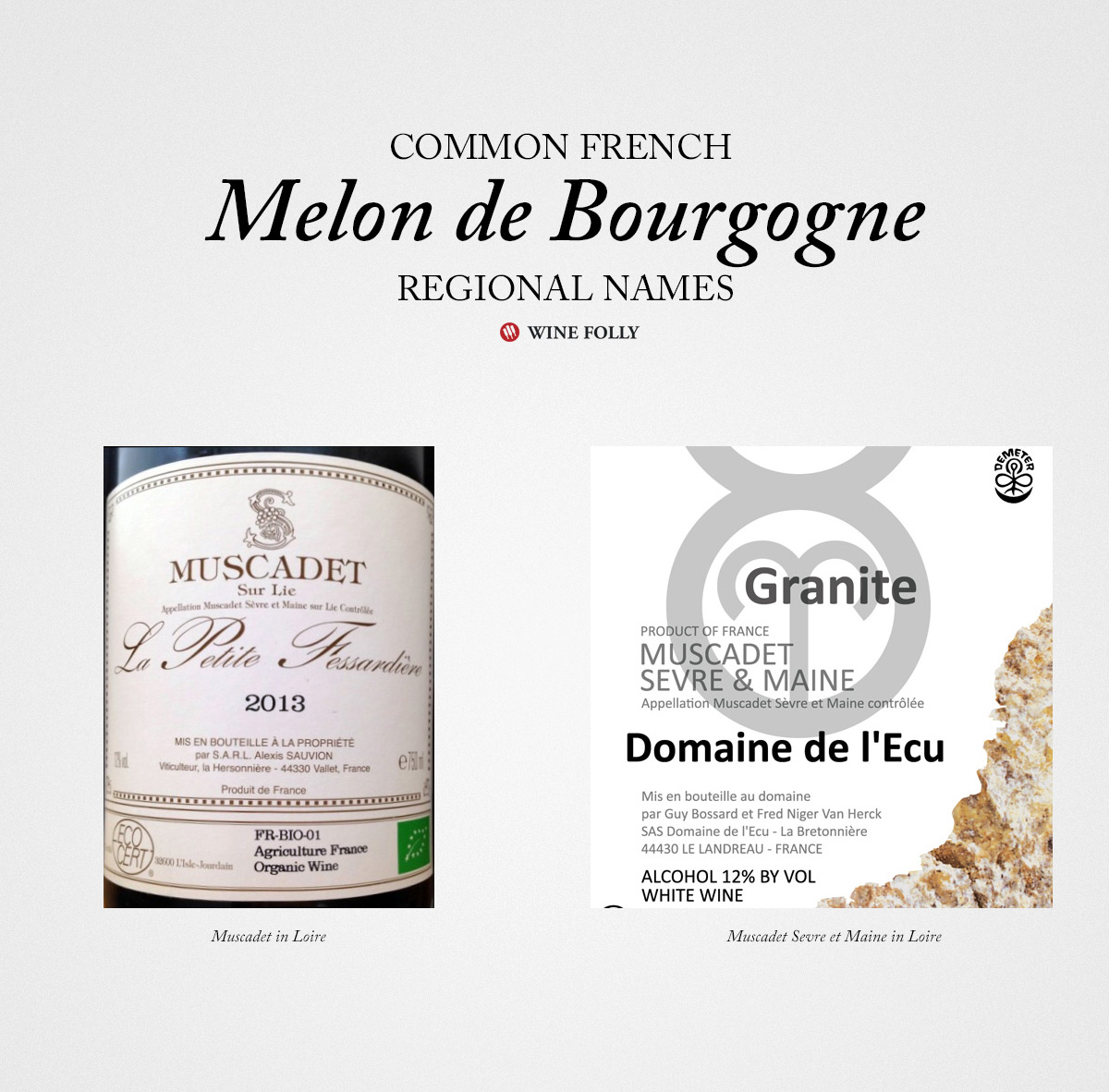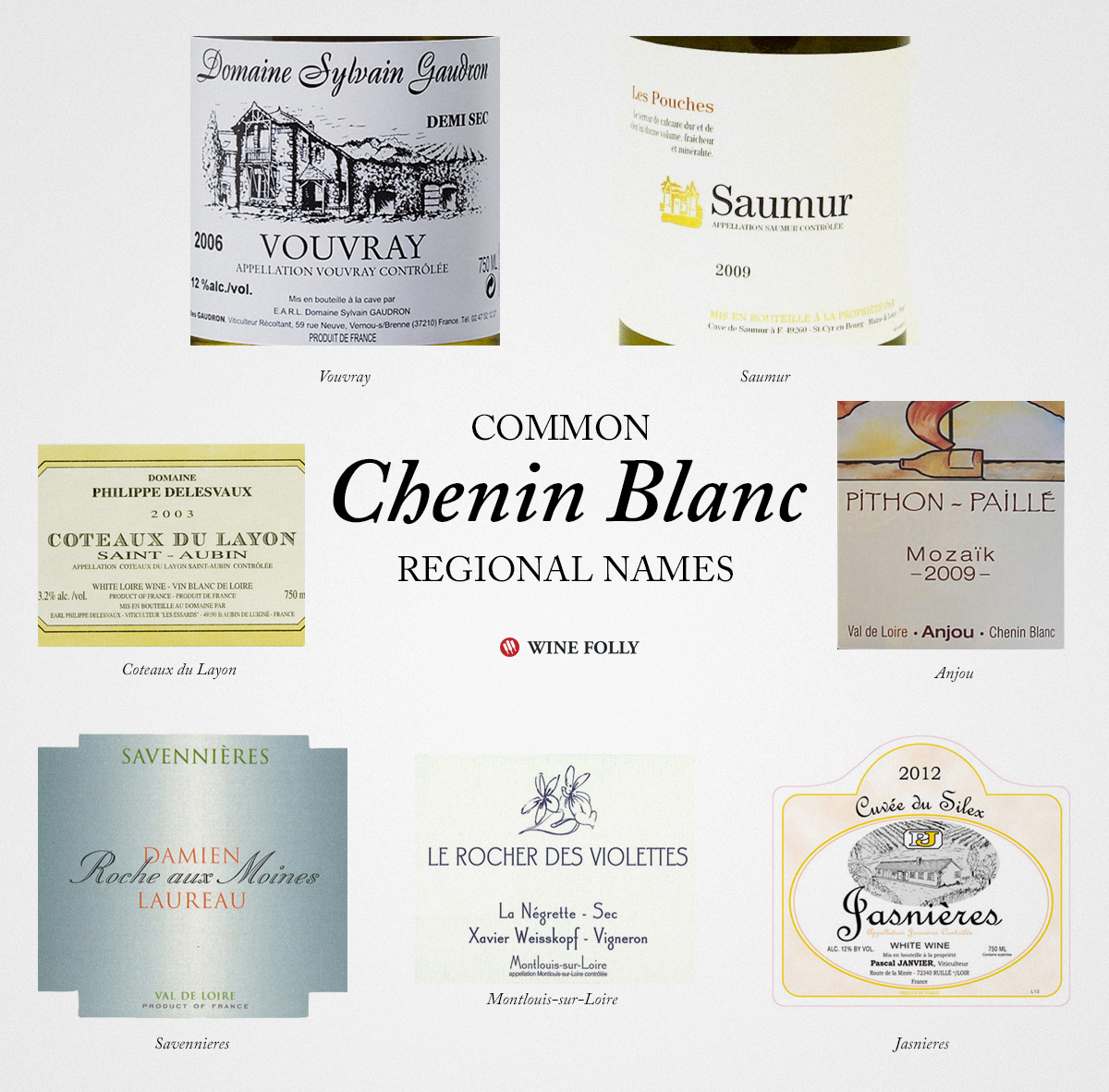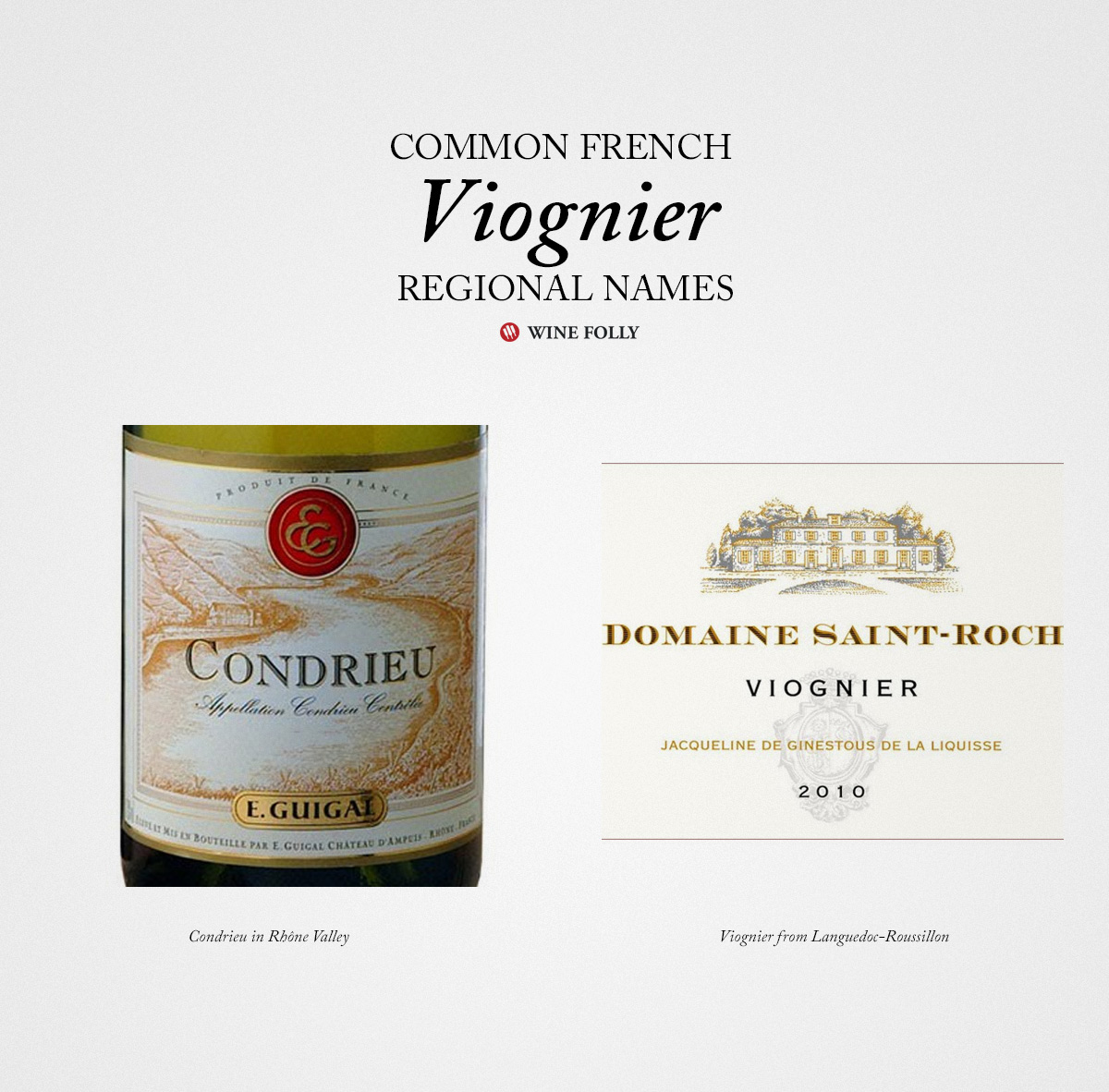France is the origin of many of the world’s most popular white wines, including Chardonnay, Sauvignon Blanc, and Chenin Blanc. However, due to how the French label their wines, it’s often hard to identify exactly what wine is in the bottle.
French White Wines
In this article, we’ll identify the primary French white wines and describe their taste (which is different from that of their American counterparts). Additionally, we’ll show you common ways French white wines are labeled.
Chardonnay
French Chardonnay Tastes & Styles: There are two primary styles of Chardonnay that produce very different tasting wines. One of them was made famous by a region called Chablis (“sha-blee”) in Burgundy and is traditionally without oak aging. Expect these French Chardonnays to be very dry, light-bodied, and minerally with flavors of lime, lemon, starfruit, and subtle notes of spring blossoms and chalk. The other style was made famous by the region of Côte de Beaune in Burgundy and is also traditionally with oak aging. Expect these wines to be dry and full-bodied with flavors of yellow apple, lemon curd, vanilla, hazelnut, and subtle notes of mushroom and crème fraîche.
Regional Notes: Chardonnay originates from the region of Burgundy, where it’s the primary white grape of Bourgogne Blanc and Chablis. Burgundy is a moderately cool area and is famous for a leaner and lighter style of Chardonnay. Besides Burgundy, Chardonnay also grows plentifully in Champagne (where it is used in their sparkling wines), the Loire Valley (where it’s lean like Chablis) and along the French Riviera Languedoc-Roussillon (where it is fruity and somewhat pineapple-y).
Sauvignon Blanc
French Sauvignon Blanc Taste & Styles: French Sauvignon Blanc is most commonly a bone-dry, lean, and light-bodied white wine with flavors of grass, green pear, honeydew melon, grapefruit, white peach, and subtle notes of slate-like minerals. There is one region in Bordeaux, however, called Pessac-Léognan that is known for also producing an oaked style of Sauvignon Blanc well worth exploring. It’s dry and medium-bodied, with flavors of grapefruit, white peach, sage, fresh bread, and subtle notes of butter. Finally, Sauvignon Blanc is blended with Sémillon to make a sweet white wine, which you can read about in the notes below on Sémillon.
Regional Notes: Sauvignon Blanc originates from Bordeaux and the Loire Valley of France. Most French Sauvignon Blanc wines come from the Loire Valley, where you will find the wines of Sancerre, Touraine, and Pouilly-Fumé (among others). In Bordeaux, Sauvignon Blanc is an important blending grape in Bordeaux Blanc where it is also commonly labeled as Graves, Entre-Deux-Mers, and Pessac-Léognan. Finally, the French Riviera in Languedoc-Roussillon grows great value Sauvignon Blanc labeled “Pays d’Oc.”
Sémillon
French Sémillon Taste & Styles: French Sémillon grows in Bordeaux, France and almost always blends with a little Sauvignon Blanc. There are two primary styles of Sémillon. The most famous style is a rare sweet dessert white wine made famous by the region of Sauternes in Bordeaux. Expect these sweet white wines to have flavors of apricot, ginger, honey, citrus zest, and subtle notes of jasmine and marmalade. The other style of Sémillon blend from Bordeaux is a dry, light-bodied white wine with notes of lemon, grapefruit, gooseberry, honeysuckle flowers, and grass.
Regional Notes: Sémillon is thought to have originated in Bordeaux. The dry style of Sémillon is commonly labeled as Bordeaux Blanc, Entre-Deux-Mers, Graves, Pessac-Léognan, and Côtes de Bordeaux. The sweet style of Sémillon is commonly labeled as Sauternes, Barsac, Cérons, Cadillac, Loupiac, and Sainte-Croix-du-Mont.
Melon de Bourgogne
Muscadet Taste: Muscadet is the name of the region in the Loire Valley where a unique-to-France wine grape, Melon de Bourgogne, grows. Muscadet wines are very light-bodied, dry, lean, and somewhat salty with flavors of lime, quince, green mango, sea shell, brine, and with subtle notes of lager and yeast. Because of its savory, light character, Muscadet is a striking wine alternative to an ice-cold beer!
Regional Notes: Melon de Bourgogne only grows in the Loire Valley and mostly in the Western Loire close to the Atlantic Ocean. There are two primary regions, Muscadet and Muscadet Sèvre-et-Maine, and the latter tends to produce the highest quality wines.
Chenin Blanc
French Chenin Blanc Taste & Styles: French Chenin Blanc is available primarily in 3 styles: a dry wine, a sweet wine, and a sparkling wine. The dry style of Chenin Blanc is light-bodied, with aromas of white peach, honeysuckle, and lime and flavors of lemon, chamomile, green pear, citrus blossoms, and sometimes subtle notes of salted butter. The sweet style of Chenin Blanc is medium- to full-bodied with flavors of peach, apricot, orange blossom, honey, marzipan, and ginger. Finally, the sparkling style ranges in sweetness, but it is typically dry with flavors of citrus blossom, white peach, lemon peel, and subtle notes of cream and yeast.
Regional Notes Within the Loire, several sub-regions specialize in Chenin Blanc. The most common regional names are Vouvray, Saumur, Anjou, Savennières, Montlouis-sur-Loire, and Coteaux du Layon.
Muscat Blanc
French Muscat Blanc Taste: French Muscat Blanc (the same grape that goes into Italian Moscato) is a medium- to full-bodied, sweet dessert wine with flavors of mandarin orange, pink lady apple, peach, perfume, honeysuckle, and subtle notes of nutmeg and vanilla bean. Occasionally, you’ll find Muscat Blanc blended into the white wines of Pays d’Oc, where it adds floral perfume aromas.
Regional Notes: Muscat Blanc grows in the South of France along the Riviera in the Languedoc-Roussillon and within the Rhône Valley. The two wines of Muscat Blanc are Muscat de Rivesaltes in Roussillon and Muscat de Beaumes-de-Venise in the Rhône Valley. These wines are fortified, meaning that they have additional alcohol added and are at least 15% ABV. Typically, the Rhône version of this wine is lighter-bodied than the one from Languedoc-Roussillon.
Viognier
French Viognier Taste: French Viognier ranges in taste from dry to off-dry (e.g. “a little bit sweet”) and has a subtle oiliness with flavors of tangerine, rose water, pineapple, almond and subtle notes of anise, white pepper, and beeswax.
Regional Notes: Viognier is thought to have originated in the Northern Rhône valley, where it grows alongside Syrah and is often blended in small amounts to Syrah wines to add floral character and smoothness. It is very hard to find in the Rhône, where it is primarily labeled as Condrieu. It also grows in abundance in the Languedoc-Roussillon, where it is often blended with other grapes, such as Chardonnay and often labeled with the name of the variety. You can also find it blended with other grapes labeled as Minervois Blanc and Roussillon Blanc.
Alsace Whites
Three white wines grow in the Alsace region of France (next to Germany) that are also good to know about. They are:
Riesling
In Alsace, Riesling is made in a dry style with flavors of lime, green apple, citrus zest, pink grapefruit, and subtle notes of Thai sweet basil and white pepper.
Gewürztraminer
French Gewürztraminer has a more sweet taste with subtle oiliness and flavors of lychee, rose, tangerine, potpourri, cinnamon, and subtle notes of tarragon and incense smoke.
Pinot Gris
Alsatian Pinot Gris is more off-dry with notes of peach, apricot, honey, baked apple, ruby-red grapefruit, and subtle notes of orange zest and smoke.
Undervalued Whites
The white wines listed above are popular and, thus, often command a higher price. There are, however, many other white wines of France to explore that are under-the-radar, delicious, and often available for less than $10 a bottle. Sound interesting? Here are a few worth knowing:
- Ugni Blanc
- (aka Trebbiano) This grape is the most important wine grape of Cognac and Armagnac brandy but also makes fabulous, dry, lean white wines with a citrus zest quality.
- Colombard
- This grape grows primarily in the under-valued region of South West France (often labeled as Côtes de Gascogne) and is used primarily for Armagnac brandy. It tastes very similar to Sauvignon Blanc, often with more touches of passion fruit.
- Picpoul de Pinet
- (aka Folle Blanche) This wine is found in the Languedoc-Roussillon region and produces very lean, minerally white wines similar to Muscadet that are known as “lip stingers.”
- Grenache Blanc
- The white version of Grenache (aka Garnacha) that grows mostly in the South of France from the Rhône to Roussillon (next to Spain). Grenache Blanc is often blended with other grapes and is loved for its dry, lemony flavors and beeswax-like texture.
- Gros Manseng
- This wine is mostly in South West France and produces both dry and sweet wines (labeled as Jurancon and Jurancon Sec) that tastes of tropical fruit with lime zest. They are amazing.
- Aligote
- The “other white” of Bourgogne that’s rarely talked about because it’s very unlike Chardonnay! Aligote is dry and lean with notes of minerals, saline and a spicy finish.
